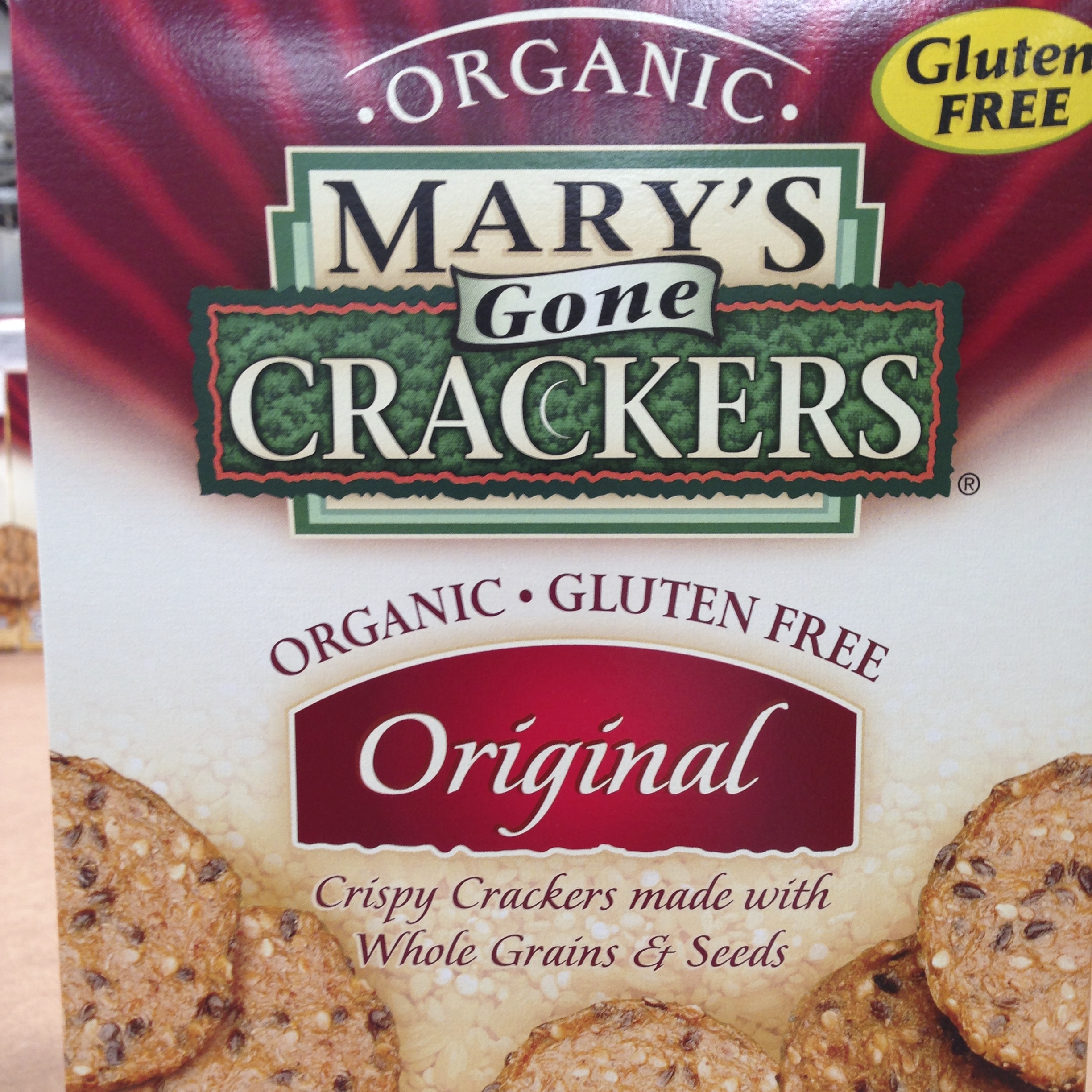

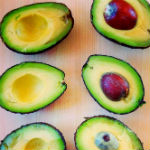
12 Tips For Eating More Plants and Less Refined Foods
I love Michael Pollan’s advice: “Eat food. Not too much. Mostly plants.”
Want some easy ways to put this into practice? Here are 12 tips for eating more plants and less refined foods:
- Try replacing coffee with green or herbal tea. Green tea is full of anti-inflammatory phytonutrients and herbal tea counts towards your water intake for the day! If you are going to drink coffee, be sure it is organic, limit it to one cup a day (or even just to the weekends) and do not add any sugar.
- Reduce chips or crackers and replace them with almonds or walnuts for an afternoon snack (about ¼ cup) or veggie sticks with hummus.
- Add spinach to your meal—it is easy to get organic prewashed baby spinach in most grocery stores. Chop it up, sauté it and add it to almost any meal!
- If you are going to add a salad to your meal, be sure to choose the darker leafy greens and be mindful with the amount of salad dressing and what’s in it—better yet, make your own! Also, add beans or nuts/seeds to a salad for added fiber and protein.
- Avoid products with added sugar or hydrogenated oils—read the ingredients label! You would be surprised where added sugar shows up.

- Choose healthy fats—coconut oil is very good for sautéing, olive oil is good for salads, dressings and lower heats, and flaxseed is great to add to smoothies or take straight (but should always be refrigerated and never heated). Nuts, seeds, olives and avocados are also good sources of healthy fats.
- Buy organic when possible and see the Dirty Dozen and Clean Fifteen to make the best choices if buying conventional (you can also read more HERE from my previous blog post on why it makes sense to buy organic).
- Smoothies are a great meal or snack: choose a quality protein powder and add berries, greens, and chia or flax seeds. See my blog post HERE on quality protein powders and a smoothie recipe!
- Think portions: Remember that a serving of whole grains or pasta is ½ cup, a serving of nuts is ¼ cup, and serving of vegetables is usually 1 cup. It is best to make half your plate vegetables!
- Try cooking a bigger healthy meal on Sunday so that you have leftovers for the week for either lunch or dinner. Soups and stews are great options (like this recipe for Tuscan Bean Soup with Kale)
- If you are going to eat soy, only sparingly eat the processed soy products
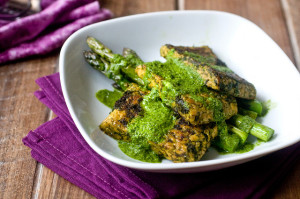 like soy sausages and burgers as well as soy milk. Instead, opt for tempeh or miso. Tofu can also be eaten in moderation for some people. Always select organic soy products since most conventional soy is genetically-modified and high in pesticides. My absolute favorite tempeh can be found HERE. New to tempeh? Check out the Post-Punk Kitchen’s great recipes HERE.
like soy sausages and burgers as well as soy milk. Instead, opt for tempeh or miso. Tofu can also be eaten in moderation for some people. Always select organic soy products since most conventional soy is genetically-modified and high in pesticides. My absolute favorite tempeh can be found HERE. New to tempeh? Check out the Post-Punk Kitchen’s great recipes HERE. - Eat a rainbow of fruits and vegetables every day! Variety is really good for our bodies and the rainbow of colors in foods contain powerful phytonutrients to give us optimum health. For example, in a stir fry add red bell pepper, carrots, yellow squash, broccoli, spinach, cauliflower, purple cabbage, garlic and onions.
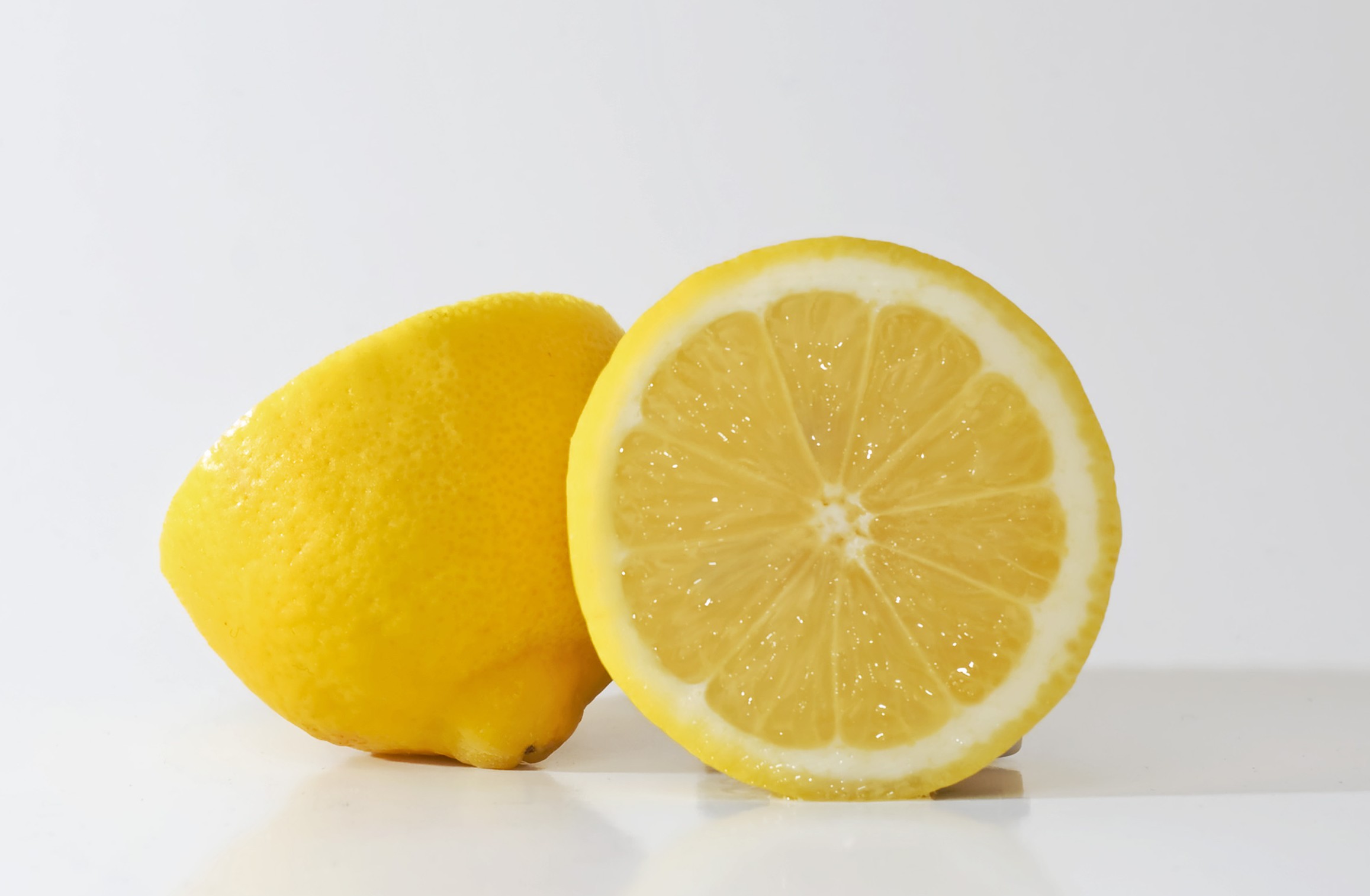
Acid or Alkaline: What Does it All Mean to our Body?
You may have heard about the benefits of an alkalizing diet, but maybe you didn’t exactly know what that meant, why it was important, or how to achieve it. Or maybe you just thought acid and alkaline were words from your tenth grade chemistry class. Hopefully this post will take a bit of the mystery out of the effects of acid or alkaline foods on our bodies.
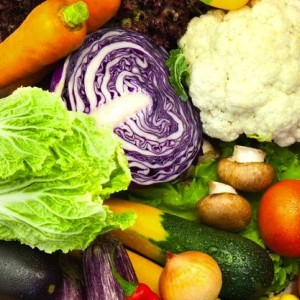 We all know that eating foods rich in vitamins, minerals, antioxidants, phytonutrients, and fiber is good for our bodies. We also know to look for whole food sources of grains and complex carbohydrates, healthy fats, and quality proteins. And since we are all biochemically different and have different needs at different stages of our life, what kinds or foods and how much will differ from person to person. All of this is really about balance—eating a variety of foods, in a rainbow of colors, to achieve balance in our bodies. Examining the acid-alkaline balance of our foods in just another tool to help us achieve this goal.
We all know that eating foods rich in vitamins, minerals, antioxidants, phytonutrients, and fiber is good for our bodies. We also know to look for whole food sources of grains and complex carbohydrates, healthy fats, and quality proteins. And since we are all biochemically different and have different needs at different stages of our life, what kinds or foods and how much will differ from person to person. All of this is really about balance—eating a variety of foods, in a rainbow of colors, to achieve balance in our bodies. Examining the acid-alkaline balance of our foods in just another tool to help us achieve this goal.
Our body tissues and blood are slightly alkaline. Stressors—in the form of infections, pollution, improper digestion, and a diet high in acidic foods—can all lead to more acid in the body (Haas, 2006). According to The Joy of Food: The Alkaline Way (2008-2009), too much acid in the body is harmful because “the body links these excess acids with alkaline minerals . . . and excretes them. Over time, this can deplete the body of needed minerals and lead to a build-up of excess acids in your cells. This reduces the efficiency and effectiveness of your cells and tissues” (p. 5). In order to counteract and prevent this build-up of acid from occurring in our cells, it is beneficial to include more alkaline foods in our diet.
The body needs the acid-buffering minerals of potassium, calcium and magnesium in order to keep our bodies at a balanced pH (Jaffe and Donovan in The Joy of Food: The Alkaline Way, 2008-2009, p. 15). Our bodies function best in an alkaline environment, and we need these mineral-buffering reserves from an alkaline diet to help us counteract the effects of acid in our bodies: “A diet that is predominantly alkaline forming is essential to the maintenance of sustained health” (p. 15). So what does this mean? What foods are alkaline or acid?
When looking at whether a food is considered alkaline or acidic, we are looking at how the food metabolizes in the body. For example, although lemon juice itself is acidic, it becomes alkalizing once it is metabolized by the body. Cow’s milk, on the other hand, is alkaline itself but becomes acidic in the body. Sound a little confusing? It can be at first but one thing that helps a lot is a chart that lists alkaline and acidic foods. There are many available on the Internet but I like this one created by Dr. Russell Jaffe, one of the leaders in looking at the role of acid in our bodies, on Dr. Liz Lipski’s website.
In general, fresh fruits and vegetables tend to be alkaline. There are a few exceptions like tomatoes, plums, cranberries, figs and carrots. Acidic foods are meats, eggs, beans, and dairy. It is especially important to pay attention to the fact that processed foods full of refined flour and sugar, hydrogenated oils, and salt are all acidic.
Does this mean we need to completely avoid all acidic foods? No, not all of them—eggs, beans, carrots, and tomatoes are all part of a healthy diet, but they need to be in balance with more alkaline foods. The most important step we can take to reduce the acid in our bodies is to avoid processed and refined foods. Elson Haas (2006), a leader in integrated healthcare and nutrition, suggests that a diet that is about 70% alkaline foods will “keep the system functioning optimally, provided we get the balance of vitamins and minerals we need, as well as the essential fatty and amino acids to perform the required fat and protein functions” (p. 394-95). The Joy of Food: The Alkaline Way (2008-2009) recommends that 80% of foods be alkaline for health restoration and 60% alkaline for maintaining health (p. 7).
Here are some easy ways to alkalinize your system:
- Add the juice of lemon, lime or raw apple cider vinegar to 4-6 ounces of water and drink before or with meals
- Add lentils, ginger, yams or sweet potatoes to your diet
- Aim to eat at least two cups of greens a day, like kale, collards, turnip greens, or endive
- Add seaweeds and kelp to your diet. You can eat these as roasted seaweed snacks or add kombu to soups (also helps with digesting beans)
- Drink Kona coffee instead of regular coffee. Kona coffee is still acidic but less so than other coffee beans
- Use ghee instead of butter
What you do NOT need to do is invest any money in alkaline water. For a clear explanation of why you do not need alkaline water, read Dr. Weil’s response here.
What questions do you have about acid/alkaline balance?
References
Haas, E. M. (2006). Staying Healthy with Nutrition. Berkeley, CA: Celestial Arts.
The Joy of Food: The Alkaline Way [Pamphlet]. (2008-2009). RMJ Holdings.
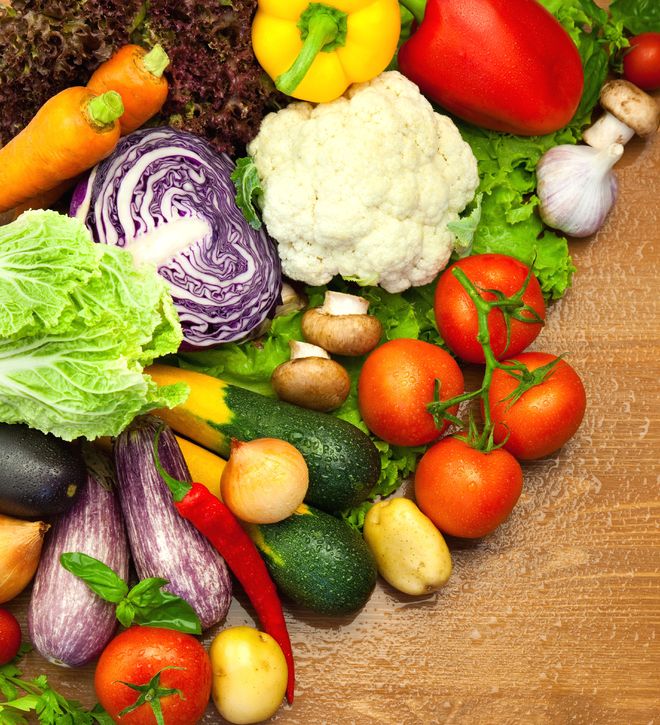
Benefits of a Plant-Based Diet
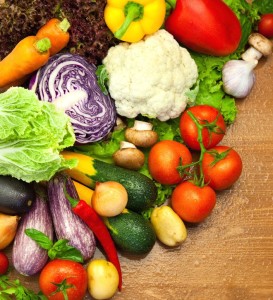 What does “plant-based” mean to me?
What does “plant-based” mean to me?
I love the term plant-based because it seems a lot more inclusive. Plant-based can run the gamut from vegan to vegetarian to pescatarian to flexitarian to someone who eats animal products occasionally. The focus is on an eating plan based on eating mostly plants. I know many people who are very committed to their vegetarian or vegan eating plans and that works great for them. I also know other people who eat a mostly vegetarian diet but may occasionally eat some animal meat. Are they vegetarian? No, technically not. Are they plant-based? I would say so. Plant-based also implies a diet of mostly whole foods that come from plants like vegetables, fruits, whole grains, legumes, nuts and seeds. Lastly, plant-based acknowledges the nutritional and health benefits of eating mostly plants. Michael Pollan’s suggestion comes to mind here: “Eat food. Mostly plants. Not too much.”
What are some of the benefits of a plant-based diet?
A well-planned, nourishing plant-based diet can have many benefits, including:
1. Less impact on the planet. When we eat mostly plants, especially organic, locally grown, seasonal ones, we are making a powerful positive impact on our planet.
2. Fiber! Eating a healthy plant-based diet often means getting much more fiber in your diet which is better for your overall colon health. Not only does fiber help with regularity, but beneficial bacteria in our digestive system need the fiber as well, so a healthy gut comes from getting at least 30 grams of fiber a day. I actually like it if people can get even more.
3. A plant-based diet has been linked to many health benefits, including decreased risk of heart disease, diabetes and certain kinds of cancer.
4. Let’s talk about dairy. Many people are either lactose intolerant or have a dairy sensitivity to the proteins found in cow’s milk. For many people, dairy can be very inflammatory or can cause digestive upset like gas, bloating, diarrhea or constipation. Going off dairy can be a great step towards relieving a lot of these problems for many people.
5. More vegetables! If a person is eating a whole foods diet full of vegetables, then they are going to get all the wonderful benefits including increased fiber, phytonutrients, antioxidants, vitamins and minerals. I suggest people make at least half their plate vegetables, no matter if they are vegan, paleo, or anything else!
I will say that eating plant-based requires careful thought and planning. Someone could be vegan and eat all junk food, so it is important to look at what you eating. My suggestions include eating mostly whole foods–foods found in the natural state. In particular, I also suggest avoiding eating processed soy, especially soy protein isolate, which also can be very inflammatory. Instead, if you body is okay on soy, stick to mostly fermented soy products like tempeh and miso. Lastly, since we all have individual needs, it is important to see what works best for your body. For example, someone may have difficulty digesting certain carbohydrates or may require more protein. The key is adjusting your eating plan to your current dietary needs. (Having trouble figuring out what that is? Schedule a session with me and we can figure that out together!)
Lastly, want to incorporate a few more plant-based recipes into your week? Check out a few of my favorite plant-based websites!
http://www.vegkitchen.com/kid-friendly-recipes/
http://www.nomeatathlete.com/vegetarian-protein/
http://happyherbivore.com/recipes/
http://www.pcrm.org/health/diets/pplate/power-plate
http://well.blogs.nytimes.com/2013/01/14/how-to-go-vegan/
http://oaklandveg.com/resources/recipes/
http://www.dentalcarealliance.net/easy-and-healthy-vegan-recipes/
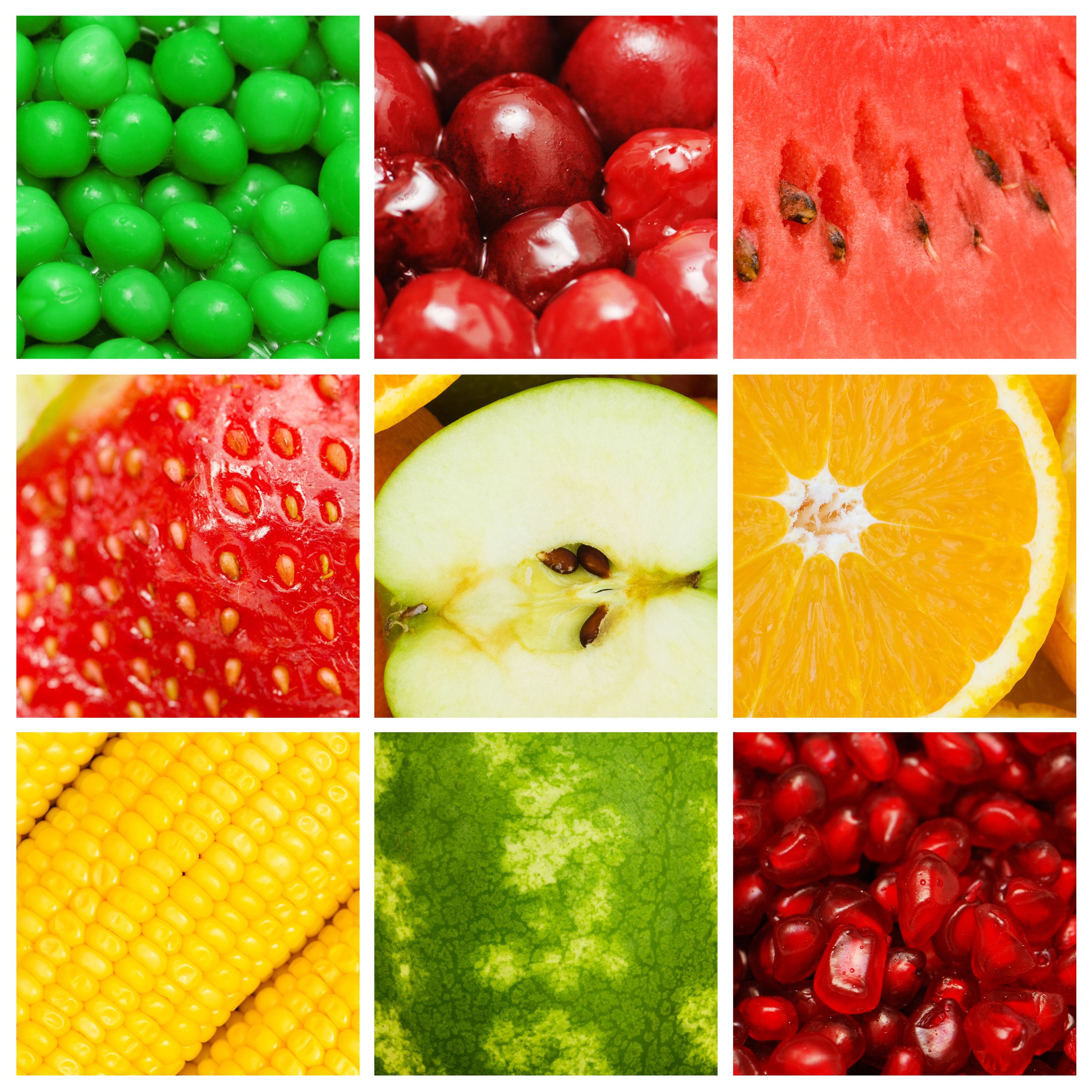
Buying Organic: Why It Is Worth It For You, Your Family, Your Community and Your Planet
What is organic farming?
Organic farming refers to the “production of food without the use of chemical additives or preservatives” (Margel, 2005, p. 34). Organic farming practices can include age-old practices like returning nutrients to the soil through compost, allowing the field to remain fallow, winter cropping of nutrient-rich plants, using seaweeds and other natural fertilizers, using natural enemies for pest control, planting a diversity of crops rather than monoculture, creating mixed farms with crops and livestock, and working with the natural cycles of nature (p. 34-35). Organic farms work in close relationship with the land to yield produce in healthier ways—for the workers, the soil and the consumers.
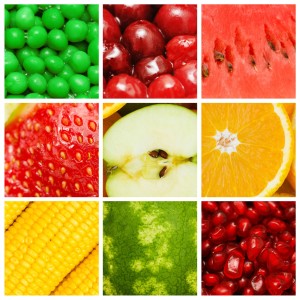 What are some of the benefits of eating organically grown food?
What are some of the benefits of eating organically grown food?
Some of the benefits of organic foods includes reducing exposure to harmful chemicals and “health robbing toxins,” increasing consumption of health-promoting micronutrients, safeguarding children’s health, and protecting the health of the environment (Murray, Pizzorno J. and Pizzorno L., 2005, p. 51-52). In the United states alone, “more than 1.2 billion pounds of pesticides and herbicides are sprayed on or added to our crops” and these chemicals are then absorbed into the air, water, soil and food supply (p. 47). There are many long-term health risks associated with pesticide exposure including cancer and birth defects (p. 47).
Why I personally buy organic foods:
When I personally think about buying organic, I feel the “investment” is worth it because there are so many benefits:
- The people who work the land are not exposed to harmful chemicals.
- These poisons will not end up in the water supply to contaminate not only our drinking water, but habitats for animal and plant species.
- The toxins will not end up built in my body from years of ingestion and exposure.
- Lastly, I am supporting with my dollar a set of values that honor the planet and its people.
Some general tips if you cannot always buy organic:
- Check out the Environmental Working Group’s page of the Clean 15 and the Dirty Dozen at http://www.ewg.org/foodnews. These are the 15 vegetables and fruits that are least contaminated and 12 that are most contaminated. A great resource with an available app for your phone!
- With corn and soy food products, I always recommend getting organic since these two are also the most often genetically modified. Until more research is done on the effects, I recommend avoiding genetically modified foods.
- Keep in mind that means also purchasing organic meat and dairy products since often the feed given to conventionally raised animals is genetically modified corn, soybeans and other grains.
- Since children are more susceptible to the build up of toxins and pesticide safety is not tested for humans their size, I strongly recommend that most of the food products you purchase for your children be organic.
What questions do you have about purchasing organic produce?
References
EWG’s Shopper’s Guide to Pesticides in Produce. (n.d.). Retrieved March 10, 2012, from Environmental Working Group website: http://www.ewg.org/foodnews/summary/
Margel, D. L. (2005). The Nutrient-Dense Eating Plan. Laguna Beach, CA: Basic Health Publications.
Murray, M. T., Pizzorno, J. E., & Pizzorno, L. (2005). The Encyclopedia of Healing Foods. New York: Atria.

Three Tips for Staying Healthy this Holiday Season
Tip #1: Drink plenty of water. The recommendation is to drink at least half your body weight in ounces, so if you weigh 150 pounds, you need at least 75 ounces of water a day. Drinking a little water with lemon or unfiltered apple cider vinegar can also help your digestion, so you can start your day with it or drink it before a meal. If you are drinking alcohol, be sure to drink two glasses of water in between each alcoholic drink. Lastly, remember that herbal teas also count towards your hydration. A cup of peppermint tea is a great way to end the evening and is soothing to your tummy!
Tip #2: Keep moving. During the busy holiday season our regular schedules can get thrown off, including our workouts. Remember you don’t need to go to the gym to be moving. Movement can be as easy as:
- Take a short walk during your lunch break
- When running errands or shopping, try walking instead or park a bit further away to get a little walking in.
- Cleaning your house counts as movement too!
- Have a 20-minute dance party at your house every evening.
If you keep moving during this holiday, you will feel stronger, better and lighter!
Tip #3: Have a plan. This will look very different for everyone, but having a plan for the next few weeks will help you stay happy and healthy. Maybe for you the plan means taking some “me time” each week to get a massage, go to yoga class, or take a walk. For others it may involve setting a plan for keeping sugar at a minimum or eating mindfully at holiday functions. Maybe you aren’t even sure where to start? That’s where I can help!
If you feel like you would like a little extra support during the next few weeks, I have a special offer just for you:
For just $75 you can get the Holiday Health Help you need to keep with your wellness goals this holiday season. This offer also makes a great gift for someone you love! I can meet in person or via phone/Skype for extra ease and convenience!
Offer good only through December 19, so BOOK ONLINE today!

